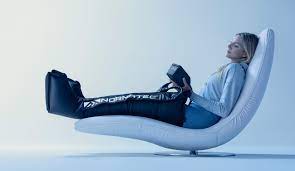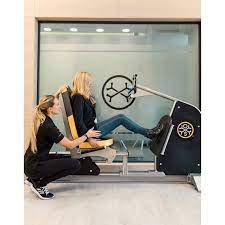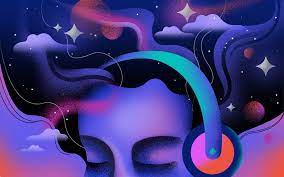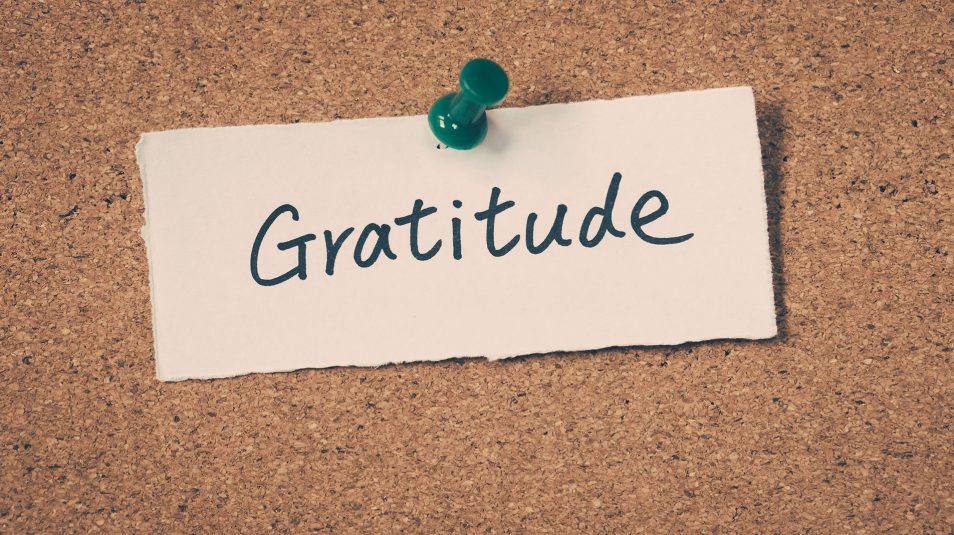You’ve heard of hacking computers, hacking smartphones and hacking email. You’ve even heard of hacking elections. But what about hacking your body? The concept is called biohacking. While it may sound like something out of Brave New World, it’s really all about self-improvement, and there are numerous ways to incorporate methods of biohacking the body and mind into your daily routine.
What is biohacking?
Let’s start with the fundamentals. Biohacking is essentially the practice of changing our chemistry and our physiology through science and self-experimentation to energize and enhance the body. It’s a broad definition, but that’s also because the concept is constantly evolving. It includes implementing bioenergetic balancing as well as lifestyle and dietary changes that improve the functioning of your body, as well as wearable technology to help you monitor and regulate physiological data. It can even run to extremes such as using implant technology and genetic engineering.
The possibilities are endless, but they are all rooted in the idea that we can change our bodies and our brains, and that by doing so we can ultimately become smarter, faster and better as human beings.
Start biohacking your body by using wearables like the FitBit or the Apple Watch to track the way you operate. You could also start experimenting with the power of music in your everyday life and adopting a sustainable health diet. But if you’re ready for something new, and something different, consider one of these non-invasive methods from our biohacking guide and see what benefits you reap:

1. Biohacking your circulatory system: Cryotherapy
Cryotherapy or cold therapy is a biohacking method that exposes the entire body to very cold temperatures. Cryotherapy causes severe vasoconstriction throughout the body. When the body returns to normal temperature, there is a rush of blood back to the tissues, which brings with it lots of nutrients and minerals – and gives you an endorphin rush.
The best part of cryotherapy is that it takes only three minutes. Our time is valuable. Most of us don’t have an hour every day for a massage or a chiropractor visit. But we probably have three minutes. It’s worth it for this invigorating, restoring experience.
Athletes from Usain Bolt to Floyd Mayweather use cryotherapy for sports recovery and to perform at their best. This biohacking technique is becoming more popular and accessible, doubling in growth in America for four straight years. Take it from Bert and try it. He says, “When you experience it directly, you’ll never go back.”
2. Biohacking your health: Red light therapy
Have you ever spent a lot of time indoors and begun to feel… off? Our bodies and brains need light to function at their best. Not only does the sun give us an important dose of vitamin D, but it helps us in a number of other physiological and emotional ways. Let’s look a little closer – specifically at the light wavelengths between 600 and 900 nanometers (nm). How does this range of light waves impact us and how can we use it to biohack the body?
Studies have shown that your body responds particularly well to red and near-infrared wavelengths, which range from 600 to 900 nm. This particular range of light waves are absorbed by the skin to a depth of about 8 to 10 millimeters, at which point your mitochondrial chromophores absorb the photons. This activates a number of nervous system and metabolic processes. Visit the Raw Beauty Website Medical Spa in Woodland Hills for more information on other skin treatments.
In plainer terms, red light therapy has become an increasingly popular form of biohacking used to treat a number of conditions. It has been proven to relieve pain, reduce inflammation and restore function. And because it is a non-invasive and non-chemical treatment, it’s not as intimidating as other forms of biohacking.
The following are some places that offer red light therapy: rheumatologist or dermatologist, gyms, medical spas, and at home using red light therapy products.

3. Biohacking your lymphatic system: Compression therapy
As Bert says, “If you don’t get the dirt out of your gas tank, the fuel isn’t going to work properly.” That’s why he focuses on cleansing and detoxing first before strengthening. The way to do that is through the lymphatic system.
The lymphatic system is the “sewage system” of the body. It gets out the waste and lactic acid that builds up from working out and from natural bodily processes. Compression therapy increases blood flow to certain parts of the body, flushing out toxins and speeding up recovery.
Bert, Zac Efron, Lebron James, and plenty of other celebrities are fans of compression therapy. Bert finds that a combination of cryotherapy and compression therapy is especially valuable for recovery.

4. Biohacking your bones: OsteoStrong
We talk a lot about cardiac health. After all, heart disease is the #1 killer of women in the United States. Everyone needs to be aware of cardiovascular diseases and how to protect themselves as best they can. As a culture, we also talk a lot about skin health – slathering on sunscreen as part of our daily routine and supplementing our diets with collagen-boosting foods. Weight loss, inflammation, memory, GI health and how an unhealthy diet and lack of exercise can prematurely age you – these are all at the forefront of our minds. But how often do we think about the health of our bones?
A decrease in bone health creeps up on you and most people are unaware of how bone density changes over time. Roughly up until the age of 30, men and women actually build more bone than they lose, so we are constantly strengthening our bones and working on bone density. But when we hit our mid-30s, things change. And if you’ve passed that benchmark, you may have felt that shift.
After reaching their mid-30s, women lose about 2% of bone density every year, and that continues for a few years following menopause. This leaves women with a high likelihood of experiencing osteoporosis.
Men, on the other hand, lose bone density at a much slower rate, but they continue to lose bone mass until the age of about 65. So even though they may have adequate bone mass for a longer period of time, the older they get, the more susceptible they are to developing osteoporosis.
A solution to declining bone density
So what do you do? Consider trying OsteoStrong, a non-pharmaceutical way of improving bone density, strength and balance as one of your biohacking techniques.
According to OsteoStrong’s website, research indicates that the stimulus required to activate the growth of healthy bone tissue is 4.2 multiples of body weight. However, this level of force would be exceptionally difficult to achieve on your own. That’s why OsteoStrong utilizes the Spectrum System, which is part of a new category of devices called the Robotic Musculoskeletal Development System (RDMS).
The Spectrum System consists of four separate devices. Under the supervision of a trained technician, each device allows you to achieve forces in excess of five to 12 times your own body weight.
The company behind OsteoStrong maintains that this system is not meant to replace exercise, but to supplement it. In fact, their system is meant to increase bone and muscular strength in a way that you can’t achieve in a gym, but will show immediate results in the way you perform while working out. This biohacking technique is meant to improve your overall health by providing extra support to your skeletal system. It can be done by everyone at every age – and it only takes about seven minutes per week. Customers have seen increases of four to 12% in bone density per year.

5. Biohacking your diet: Intermittent fasting
We can’t have a conversation about health and biohacking without talking about biohacking your diet. Carb-light meals. Eating the right kinds of fats. Abstaining from sugar. Eating more superfoods.
New research has found that it’s not just what we eat, it’s when we eat that can make a huge difference. Many experts have turned to intermittent fasting to help you optimize your body’s nutrition intake. Intermittent fasting will not only help you lose fat but also gain muscle and energy.
If you just flinched at the idea of “fasting,” we hear you. The notion of prolonged fasting – not eating for 48 to 72 hours – isn’t practical for the average person. But intermittent fasting offers a happy in-between. It’s more of an eating pattern that you follow throughout the day, not an old-fashioned diet, and will allow you to still reap many of the benefits of a true fast.
To understand why intermittent fasting works, you need to make the distinction between your body being in a “fed state” and a “fasted state.” When your body is in a fed state, you are digesting and absorbing food. Generally speaking, you are in a fed state for about three to five hours after eating. During this phase, your insulin levels are high and your body is focused on digestion.
When your body is allowed to rest – during the fasted state – you experience a number of benefits. When you fast, you increase your levels of growth hormones as much as five times their normal rate, which boosts your metabolic rate. Fasting can also reduce your insulin resistance, which lowers your blood sugar and makes stored body fat more accessible to burn. Some experts indicate that intermittent fasting may also reduce LDL cholesterol (the “bad cholesterol”) which is a known risk factor when it comes to heart disease.
Fasting may also provide a number of other significant benefits including improved cognitive function, cancer prevention, increased cellular autophagy (cellular waste removal) and lower levels of inflammation.
While there are many versions of intermittent fasting, the most user-friendly is the “16/8” method (also known as the Leangains protocol). This method revolves around a straightforward structure in which you restrict your daily eating period to eight hours. For example, each day you eat from 1pm to 9pm, and fast for the other 16 hours.
Biohacking your body involves trying new techniques and finding out what works. Alternate day fasting has you fasting one day, then eating normally the next. You might restrict calories one day, then eat normally the next. The 5:2 method involves eating normally five days a week and completely fasting the other two days. You can also lengthen or shorten your eating window.
Does this type of diet sound intimidating? Start with a 14-hour fast for one week. With this fast, you can eat from 10am to 8pm, then fast the next 14 hours. When that becomes comfortable, cut back to an eating period of 11am to 8pm for a week and so on until you reach a fasting period of 16 hours.

6. Biohacking your brain: Functional music
Music has an incredible effect on the brain. With over 100 billion neurons that are constantly using electricity to talk to each other, your brain is like Grand Central Station. If everyone is chattering loudly at the same time, it can be tough to concentrate on what you need to get done. That’s where music biohacking comes in. Brain activity can be measured in a wave-like pattern and determines if you feel alert, sleepy, relaxed, or stressed. Things that can affect your brainwaves include the activity you are currently performing, how much restorative rest you’ve had, and what you’ve just eaten or drank.
One of the most reliable ways to change your brainwaves is through a consistent sound wave. Audio entrainment, a form of music biohacking, uses binaural beats and tones to synchronize with your brain waves and induce a meditative, relaxed state. You can access programs developed specifically for your own brain and the activities you want to accomplish at Brain.fm. If you’re not ready to go that far, you can still change your mood and mindset by queuing up your favorite playlist and listening while you work out, cook breakfast, or commute to work.
&. Biohacking your sleep: Your super power
Step 1: Control Your Exposure to Light
Melatonin is a naturally occurring hormone controlled by light exposure that helps regulate your sleep-wake cycle. Your brain secretes more melatonin when it’s dark—making you sleepy—and less when it’s light—making you more alert. However, many aspects of modern life can alter your body’s production of melatonin and shift your circadian rhythm.
Step 2: Exercise during the day
People who exercise daily, regularly sleep better at night and feel less sleepy during the day. Regular exercise improves the amount and quality of sleep and increases the amount of time you spend in the deep, thus restorative stages of sleep.
Step 3: Watching what you digest
Your daily daytime eating habits play a role in how well you sleep—especially right before bedtime.
Limit caffeine and nicotine. You might be surprised to know that caffeine can cause sleep problems even up to ten to twelve hours after drinking it. Smoking is another stimulant that can disrupt your sleep, especially if you smoke close to bedtime.
Avoid large meals before bed. Try to make dinnertime earlier in the evening, and avoid heavy, rich foods within two hours of bed. Spicy or acidic foods can cause stomach trouble and heartburn.
Once you have a handle on the whole biohacking process, start making small changes that will help you identify what works best for your entire bedtime routine. Remember balancing your hormones through diet, exercise, and natural supplements is the best biohack to better sleep.
Reasons to Invest in Your Mental Health and Wellness with a Personal Development Coach
7. Biohacking your mindset: Gratitude
How we view life has a huge effect on our moods, how we treat others and our general levels of fulfillment. When you have an abundance mindset, you’re consistently grateful for everything that comes your way and are always focused on the positive. Have a hard time adopting this type of perspective? Changing your mindset is really about nothing more than practice. You need to consistently refocus your brain to see the positive in every situation until it becomes second nature. These biohacking techniques and tools can help:
- A gratitude journal in which you write three to five things you’re grateful for helps you reframe the day to focus on the positive and reflect on all the good things that happen to you.
- Take a gratitude walk where you give thanks and send positive energy to every living thing you see. If you walk to work or take a morning jog, you can easily incorporate this into your normal routine.
- Write a weekly letter of gratitude to someone who has helped you or who means a lot to you. It could be a family member, a long-lost friend or even a coworker who always remembers to stock your favorite coffee.
- Begin the day with a ritual, such as meditating, and set an intention to be grateful for all you encounter.

8. Biohacking your function: Supplements
Exercising, eating right, and developing the right mindset are important steps to unlocking an extraordinary life. Biohacking helps you take this to the next level by incorporating supplements like nmn dietary supplement capsules that improve focus, increase energy and help your body benefit from the most bioavailable forms of nutrients available.
We usually don’t get all the vitamins and minerals we need to keep us at peak performance. High-quality supplements in the form of pills, shakes, bars, or drinks can fill the nutritional gap and help boost performance, detoxify our systems and achieve daily energy.
Biohacking for health and happiness
What is biohacking? It’s a way to change your body, your health, and your brain so that you can reach your goals and achieve a peak state of mind. Whether you use supplements, technology like red light therapy or you make changes to incorporate an abundance mindset, biohacking is meant to help you make lasting, positive change.
Need help incorporating biohacking into your life? Speak with a professional, like a coach, and start educating yourself on the subject. Once you’re ready to begin, your body will thank you for all the hard work you’ve put in to make it the best it can be.







